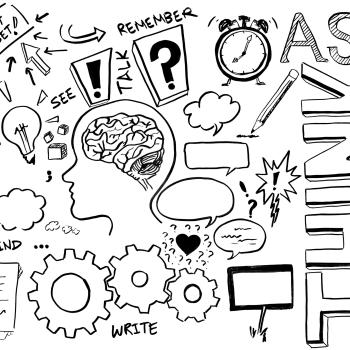The Art of the Doodle: Writing with Imagination

About this Strategy Guide
Use independent, imaginative artwork and varied writing prompts to assess understanding of a given topic for a student body with differentiated needs.
Research Basis
As Vygotsky (1967) explains, creative activity is vital for full flourishing of the brain and mental growth; he states that “imagination, as the basis of all creative activity, is an important component of absolutely all aspects of cultural life” (p. 9). Using art in the classroom allows students to transcend the traditional or basic levels of understanding (Sidelnick) and access multiple knowledge bases, allowing deeper understanding and a sense of accomplishment. Providing differentiated writing prompts allows students of differing abilities to reach the same learning objectives through instruction which is based on their needs.
Accessing imagination allows students a deeper level of understanding and the chance to use their creativity to build a more personal meaning. When differentiating for students of varying ability levels, it is often useful to leave some aspects of the assignment the same. This way, the students feel they are still performing equally with their peers.
Sidelnick, M. A., & Svoboda, M. L. (2000). The Bridge Between Drawing and Writing: Hannah’s Story. The Reading Teacher, 54(2), 174-184.
Vygotsky, L.S. (1967). Imagination and Creativity in Childhood. Journal of Russian and Eastern European Psychology, 42(1), 7-97.
Strategy in Practice
- Show students the “doodle” itself. This is a miscellaneous shape or image, such as these examples, which can be easily adapted and altered to fit into a larger image.
- Assign the differentiated writing prompts. The prompt in this case (from an 8th grade ELA class analyzing the effectiveness of a fictional story developing the theme “all actions have consequences”) is intended to encourage students to think abstractly, but could be altered to fit any situation.
- Students who struggle with abstract thought may need prompts more clearly connected to the text: “All of our characters made choices that led to consequences. What was the most challenging consequence for the characters, and why?”
- Students with a moderate ability to think abstractly may need a more open-ended prompt: “Our characters have learned that all actions have consequences. Do you think the consequences in the story were fair?”
- Students with more refined abilities in abstract thought may need a more challenging prompt which requires them think very critically: “Consider how the characters in the story have acted. Will the lessons they have learned affect their behavior in the future, when faced with a similar decision?” See the Differentiating the Reading Experience for Students Strategy Guide for more ideas regarding differentiating writing tasks relating reading and writing.
- Explain the assignment:
- Students should answer the prompt, trying to include three main explanations for the “why” of their answer.
- They should then draw a picture which illustrates their answer. Within the picture, the “doodle” image must be hidden somewhere: the background, the foreground, a small detail, or a large element of the illustration. It must be organically included as a part of the image. See this example for a student responding to a less abstract prompt; this student is responding to a prompt with more demands for abstract thinking.
- Students should have time in class to outline their argument and brainstorm their illustration, then homework time as well.
- Students share their writing and illustrations, looking for the different ways they incorporated the doodle as part of the discussion.